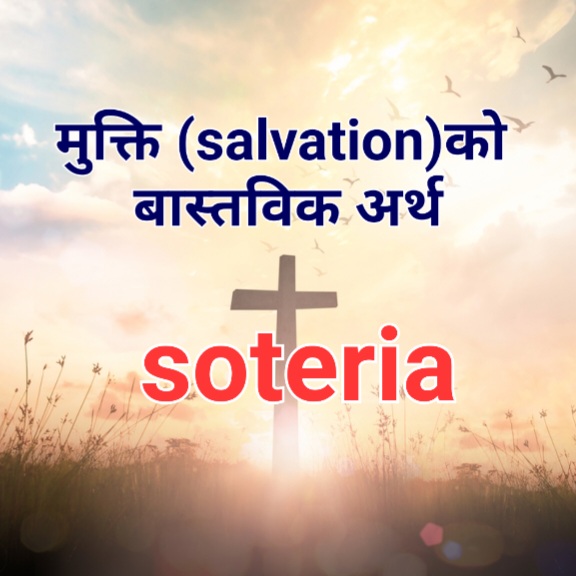THE CLOSED DOORS FOR THE GOSPEL IN NEPAL
INTRODUCTION
During 18th and 19thcentury, while churches in the West were busy on debating, quarrelling and again reviving due to the "Rationalism, revivalism and denominationalim,"[1] the Himalayan Kingdom Nepal, the top of the world remained in darkness without the light of the Gospel. It was the year of 1950, when the door for the gospel was opened in Nepal India Nepal Jesus across the country, but, today, the possibility is there. Many missionaries are harvesting the crops today, but it was impossible to find a Christian in side the country, 50 years ago. Indians received Gospel long time ago. Churches were flourished in the neighbor land under British colonialism. But their voice was too low to reach at the ears of Nepalese peoples.[3] What did close the door back then? Why any missionary did not enter the country before 1950? The paper will focus on these questions analyzing the situation of Nepalese, Gospel in Nepal
Before 1700s, Instead of a single nation, there were several minute kingdoms in the place where present Kingdom of Nepal Kathmandu Valley Nepal Nepal Kathmandu Valley
Chapter 2
THE POLITICAL DOOR
Though Nepal British India companies are in the control of their closest neighbor India
The Unification and the Exclusion Policy
Prithvi Narayan Shah, king of a small hilly country, had vision to unify all the tiny states to form them into one Larger, viable nation.[9] Prithvi Narayan Shah started his unification by uniting his neighbor countries such as Banepa, Nala, Nuwakot etc.[10] Around 1770, Prithvi Narayan Shaha Hindu Kingdom India India Nepal
War with England
The unification begun by the Great King Prithvi Narayan Shah was carried on by his followers. Nepal Sikkim India Nepal Kingdom of Nepal Nepal Nepal
Monopoly of Ranas for over a century
After the peace treaty with British, the possibility of expanding the kingdom was ended. Then the internal struggle for peopower and position began.[22]From the middle of the 19th century, Ranas from the Capital controlled the political power. After happening several massacre, Janga Bahadur Rana King was left without power. People remained in their primitive Economic condition of 18thcentury. He established a fundamental Hindu Muluki Ain
Rana's Friendship with England India King took refuge in India India Nepal
CHAPTER 3
SOCIO-RELIGIOUS DOOR
It was the political situation outside and inside that caused exodus of all the Christians from Nepal Nepal Nepal Christ , the Society and religious culture inside Nepal Jesus .[28] There must be something that hindered Gospel inside Nepal Darjeeling
The Hindu Religion: the Foundation
When, Hindu look at the History that king Prithvi Narayan Shah's exclusion policy, they see it as the preservation of the civilization and culture of the valley.[30] BBC writes in one instance that Nepalese are proud of their History, specially the unification of the states by King Prithvi Narayan Shah.[31] People worship King Prithvi Narayan Shah's palace as BBC quotes Purna Jung Shahi, curator of Gorkha Durbar, "This is a place where we our history combines with our faith."[32] Nepal King unites them all. Their Worship of King as Visnu, as preserver of life. Therefore Hinduism is the very central to Nepalese.[33] Therefore, nation itself is representing the ancient Hinduism to the world. Since Prithvi Narayan Shah laid the foundation of the Kingdom Nepal the Hindu socio-religious door is been closed for the Gospel.
The Caste system: the Structure
Today one can not deny that "Caste, family and Marriage are
parts of the Hindu social system."[34] Due to the isolation from outsiders, each group of people preserved their own distinct language or dialect and developed its own marriage and social rules and became ethnocentric in almost every respect.[35] During the isolation period (From 1769 to 1950), the cast system became a social ladder thus the Hindu caste system tends to pervade the entire Nepali Situation.[36]Nepal Society is made of four different castes i.e. Brahman, Kshatriya, Vaishya and sudra. And it was also believed that these castes were created by great god, Prajapati.[37] Among these castes, Brahmans are very numerous and have much influence in the country because they are the priest of this religion based society.[38] Cindy Perry
The Culture: The Bond
The foundation of the Hinduism and social structure of caste system defines and maintains the main component of Nepali Culture.[43]Occupations of Nepalese are defined by their Caste and every aspect of Nepali culture, art, architecture, festivals and other customs are painted by Hindu religion.[44]Since all the rulers and high class people are Hindu (most of them Brahmins), they promote Hindu cultures in the society. And People are also very fond of those religious practices they mingle with this with great enthusiasm.[45] Inter-caste marriage is not allowed if done the consequence is disgrace and exclusion from the society.[46]From Birth to marriage and death all the ceremony and cultures are bound to hindu social structures. However, The Tradition of religiousness has given birth to two aspects i.e. loyalty towards the country and king.[47] The reason for his given by Baidhya and Bajracharya as following:
"The country is mother for a Nepali and one can easily sacrifice everything he owns including his precious life. Similarly, the king is father and protector, whom utmost loyalty must be offered. Hindu scriptures deal in length the importance of one's country and King and this is the cause why Nepali culture preserves this tradition."[48]
Therefore it is clearly seen that people in this country are tightly bound with the culture and it is very hard from them to go away with this. The bound was much more tight and rigid during those excluded years. It was the last door that was locked again the gospel. Nowadays people are more educated than before and people started analyzing their social structures and society. we can know this by observing one young person's request for change in one magazine. He writes,
"Christianity is the best! It’s the most liberal or democratic –in political jargon... our signs on many temples read – "Only Hindus are allowed"... We still have the gene – "Untouchables" in the biochemistry of the Hindu doctrine..."[49]
But this is not the voice of all the Nepali people. Still opposition is there form society, and culture. People need Jesus but the culture and social system doesn't allow. That's why, when Sadhu Sundar Singh dared to enter Nepal
CHAPTER 4
CONCLUSION
Today Nepal Nepal Nepal
by: -Pabitra M. Bhandari
GLOSSARY
Brahman: the highest caste in Nepal
Dharma: Rituals and ceremony done to be religious or to earn salvation
Gorkha: A Hilly region of Nepal Nepal
Gorkhalis: People from Gorkha, it Also refers to the Shah Kings
Kshatriya: the caste lower than Brahman, who are actively engaged in government etc.
Lasha: Capital of Tibet Nepal
Malla: a Group of Nepali who ruled in Kathmandu Valley
Mandir: Temple
Prajapati: Lord of People
Prithvi Narayan Shah: Great King and most respected King who initiated the expansion of the Kingdom.
Ranas: a group of Nepali people. During the 19 century they took over the power and conducted dictatorship over Nepal
Sudra: the lowest level caste, they do the lowest level of job
Vaishya: the third level caste, usually they are soldiers
Visnu: A Hindu God, Preserver of life
SELECTED BIBLIOGRAPHY
Bhattarai,Guna Dev. Christian Missionaries In Nepal Nepal March 17, 2001 .
Bista, Dhor Bahadur Nepal Kathmandu , Nepal Ratna Pustak Bhandar
Maharjan, Mangal Man. Nepal Kathmandu , Nepal
____________. Nepali around the World: Emphasizing Nepali Christians of the Himalayas .Kathmandu , Nepal
Sharma, Bal Krishna. The Origin of Caste System in Hinduism and its Relevance in the Present Context. Kathmandu , Nepal
Vaidya, T.R. and B.R. Bajracharya Nepal New Delhi , India
[1]Earle E. Cairns, Christianity through the Century, (Grand Rapids, Michigan: Zondervan, 1996). 335
[2]Cindy Perry Nepal
[3]Ibid. 27
[4]Guna Dev Bhattarai March 17, 2001 ; the article is available from http://www.nepalnews.com/ (search: Christians)
[5]Cindy Perry Nepal
[6]Jonathan Lindell Nepal
[7]Ibid, 40.
[8]Jonathan Lindell
[9]Ibid, 35.
[10]Shew Shunker Singh Munshi Nepal
[11]Munshi & Pandit, 176.
[12]Ibid.
[13]Cindy Perry
[14]Jonathan Lindell
[15]Ibid.
[16]Guna Dev Bhattarai Nepal
[17]Cindy Perry Himalayas (Kathmandu, Nepal: Ekta Books, 1997), 11.
[18]Munshi & Pandit, 177.
[19]Lindell, 40.
[20]Ibid, 41.
[21]Ibid.
[22]Lindell, 63.
[23]Karl Samson Jane Aukshunas May 29, 2004 .
[24]"Nepal May 29, 2004 .
[25]Lindell, 64~5.
[26]Samson & Aukshunas; Internet.
[27]Lindell, 132.
[28]Cindy Perry Nepal
[29]Cindy Perry
[30]Guna Dev Bhattarai Nepal
[31]Daniel Lak Nepal May 29, 2004 .
[32]Ibid.
[33]Ibid.
[34]Sushil K. Naidu Nepal
[35]Dor Bahadur Bista
[36]Ibid, ix.
[37]Bal Krishna Sharma, the Origin of Caste System in Hinduism and it Relevence in the Present Context (Nepal: Samdan Publishers and ISPCK, 1999) 13.
[38]Munshi & Pandit, 29.
[39]Cindy Perry Nepal
[40]Munshi & Pandit, 179.
[41]Cindy Perry
[42]Bal Krishna Sharma, 197.
[43]T.R. Vaidya Bajracharya , Nepal
[44]Ibid.
[45]Sushil K. Naidu, 92.
[46]Bal Krishna Sharma, 185.
[47]T.R. Baidya & B.R. Bajracharya, 25.
[48]Ibid.
[49]Ritesh Shrestha Kathmandu Post, July 30, 2001 . also avilable from http: nepalnews.com; internet (search: Christian ).
[50]Lindell 56; Cindy Perry Nepal
[51]Anil Stephen , "the Church at the Top of the World," Christianity Today Magazine Vol. 44, No. 4, (April 3, 2000 ,) 56.


















